3. Fingleton C, Smart K, Moloney N, Fullen BM, Doody C. 2015; Pain sensitization in people with knee osteoarthritis: a systematic review and meta-analysis. Osteoarthritis Cartilage. 23:1043–56. DOI:
10.1016/j.joca.2015.02.163. PMID:
25749012.

4. Bannuru RR, Osani MC, Vaysbrot EE, Arden NK, Bennell K, Bierma-Zeinstra SMA, et al. 2019; OARSI guidelines for the non-surgical management of knee, hip, and polyarticular osteoarthritis. Osteoarthritis Cartilage. 27:1578–89. DOI:
10.1016/j.joca.2019.06.011. PMID:
31278997.

5. Lluch E, Nijs J, Courtney CA, Rebbeck T, Wylde V, Baert I, et al. 2018; Clinical descriptors for the recognition of central sensitization pain in patients with knee osteoarthritis. Disabil Rehabil. 40:2836–45. DOI:
10.1080/09638288.2017.1358770. PMID:
28768437.

6. Moore RL, Clifford AM, Moloney N, Doody C, Smart KM, O'Leary H. 2020; The relationship between clinical and quantitative measures of pain sensitization in knee osteoarthritis. Clin J Pain. 36:336–43. DOI:
10.1097/AJP.0000000000000798. PMID:
31977373.

7. Arendt-Nielsen L, Skou ST, Nielsen TA, Petersen KK. 2015; Altered central sensitization and pain modulation in the CNS in chronic joint pain. Curr Osteoporos Rep. 13:225–34. DOI:
10.1007/s11914-015-0276-x. PMID:
26026770.

8. Akin-Akinyosoye K, Frowd N, Marshall L, Stocks J, Fernandes GS, Valdes A, et al. 2018; Traits associated with central pain augmentation in the Knee Pain In the Community (KPIC) cohort. Pain. 159:1035–44. DOI:
10.1097/j.pain.0000000000001183. PMID:
29438225. PMCID:
PMC5959005.

9. Neblett R, Cohen H, Choi Y, Hartzell MM, Williams M, Mayer TG, et al. 2013; The Central Sensitization Inventory (CSI): establishing clinically significant values for identifying central sensitivity syndromes in an outpatient chronic pain sample. J Pain. 14:438–45. DOI:
10.1016/j.jpain.2012.11.012. PMID:
23490634. PMCID:
PMC3644381.

10. Jeong Y, Leem JW, Chung SS, Kim YS, Yoon DM, Nam TS, et al. 2000; Mechanism of hyperalgesia following cutaneous inflammation by complete Freund adjuvant. Korean J Pain. 13:164–74.
11. Cherian JJ, Jauregui JJ, Leichliter AK, Elmallah RK, Bhave A, Mont MA. 2016; The effects of various physical non-operative modalities on the pain in osteoarthritis of the knee. Bone Joint J. 98-B(1 Suppl A):89–94. DOI:
10.1302/0301-620X.98B1.36353. PMID:
26733650.

12. Tuncer T, Cay FH, Altan L, Gurer G, Kacar C, Ozcakir S, et al. 2018; 2017 update of the Turkish League Against Rheumatism (TLAR) evidence-based recommendations for the management of knee osteoarthritis. Rheumatol Int. 38:1315–31. DOI:
10.1007/s00296-018-4044-y. PMID:
29777340.

13. Hochberg MC, Altman RD, April KT, Benkhalti M, Guyatt G, McGowan J, et al. American College of Rheumatology. 2012; American College of Rheumatology 2012 recommendations for the use of nonpharmacologic and pharmacologic therapies in osteoarthritis of the hand, hip, and knee. Arthritis Care Res (Hoboken). 64:465–74. DOI:
10.1002/acr.21596. PMID:
22563589.

18. Atamaz FC, Durmaz B, Baydar M, Demircioglu OY, Iyiyapici A, Kuran B, et al. 2012; Comparison of the efficacy of transcutaneous electrical nerve stimulation, interferential currents, and shortwave diathermy in knee osteoarthritis: a double-blind, randomized, controlled, multicenter study. Arch Phys Med Rehabil. 93:748–56. DOI:
10.1016/j.apmr.2011.11.037. PMID:
22459699.

19. Kawasaki T, Inoue K, Ushiyama T, Fukuda S. 1998; Assessment of the American College of Rheumatology criteria for the classification and reporting of osteoarthritis of the knee. Ryumachi. 38:2–5. Japanese. PMID:
9564771.
22. Heller GZ, Manuguerra M, Chow R. 2016; How to analyze the visual analogue scale: myths, truths and clinical relevance. Scand J Pain. 13:67–75. DOI:
10.1016/j.sjpain.2016.06.012. PMID:
28850536.

24. Tüzün EH, Eker L, Aytar A, Daşkapan A, Bayramoğlu M. 2005; Acceptability, reliability, validity and responsiveness of the Turkish version of WOMAC osteoarthritis index. Osteoarthritis Cartilage. 13:28–33. DOI:
10.1016/j.joca.2004.10.010. PMID:
15639634.

25. İlçin N, Gürpınar B, Bayraktar D, Savcı S, Çetin P, Sarı İ, et al. 2016; Cross-cultural adaptation and validation of the Turkish version of the pain catastrophizing scale among patients with ankylosing spondylitis. J Phys Ther Sci. 28:298–303. DOI:
10.1589/jpts.28.298. PMID:
26957778. PMCID:
PMC4756024.

26. Sullivan MJ, Bishop SR, Pivik J. 1995; The pain catastrophizing scale: development and validation. Psychol Assess. 7:524–32. DOI:
10.1037/1040-3590.7.4.524.

27. Hisli N. 1989; Use of the Beck Depression Inventory with Turkish university students: reliability, validity and factor analysis. Turk J Psychol. 7:3–13.
28. Tunca Yılmaz Ö, Yakut Y, Uygur F, Uluğ N. 2011; Turkish version of the Tampa Scale for Kinesiophobia and its test-retest reliability. Fizyoter Rehabil. 22:44–49. Turkish.
29. Vlaeyen JW, Kole-Snijders AM, Rotteveel AM, Ruesink R, Heuts PH. 1995; The role of fear of movement/(re)injury in pain disability. J Occup Rehabil. 5:235–52. DOI:
10.1007/BF02109988. PMID:
24234727.

30. Suokas AK, Walsh DA, McWilliams DF, Condon L, Moreton B, Wylde V, et al. 2012; Quantitative sensory testing in painful osteoarthritis: a systematic review and meta-analysis. Osteoarthritis Cartilage. 20:1075–85. DOI:
10.1016/j.joca.2012.06.009. PMID:
22796624.

31. Walton DM, Levesque L, Payne M, Schick J. 2014; Clinical pressure pain threshold testing in neck pain: comparing protocols, responsiveness, and association with psychological variables. Phys Ther. 94:827–37. DOI:
10.2522/ptj.20130369. PMID:
24557645. PMCID:
PMC4040424.

32. Wu Y, Zhu F, Chen W, Zhang M. 2022; Effects of transcutaneous electrical nerve stimulation (TENS) in people with knee osteoarthritis: A systematic review and meta-analysis. Clin Rehabil. 36:472–85. DOI:
10.1177/02692155211065636. PMID:
34971318.

33. Palmer S, Domaille M, Cramp F, Walsh N, Pollock J, Kirwan J, et al. 2014; Transcutaneous electrical nerve stimulation as an adjunct to education and exercise for knee osteoarthritis: a randomized controlled trial. Arthritis Care Res (Hoboken). 66:387–94. DOI:
10.1002/acr.22147. PMID:
23983090.

34. Rakel BA, Zimmerman BM, Geasland K, Embree J, Clark CR, Noiseux NO, et al. 2014; Transcutaneous electrical nerve stimulation for the control of pain during rehabilitation after total knee arthroplasty: a randomized, blinded, placebo-controlled trial. Pain. 155:2599–611. DOI:
10.1016/j.pain.2014.09.025. PMID:
25270585. PMCID:
PMC4250415.

35. Kim JH, Shin YS. 2020; Effects of localized heating on pain, skin perfusion, and wound healing after lumbar decompression. J Neurosci Nurs. 52:251–6. DOI:
10.1097/JNN.0000000000000529. PMID:
32868698.

36. Doménech J, Sanchis-Alfonso V, Espejo B. 2014; Changes in catastrophizing and kinesiophobia are predictive of changes in disability and pain after treatment in patients with anterior knee pain. Knee Surg Sports Traumatol Arthrosc. 22:2295–300. DOI:
10.1007/s00167-014-2968-7. PMID:
24691626.

37. Wade JB, Riddle DL, Thacker LR. 2012; Is pain catastrophizing a stable trait or dynamic state in patients scheduled for knee arthroplasty? Clin J Pain. 28:122–8. DOI:
10.1097/AJP.0b013e318226c3e2. PMID:
22001663.

38. Carlesso LC, Segal NA, Frey-Law L, Zhang Y, Na L, Nevitt M, et al. 2019; Pain susceptibility phenotypes in those free of knee pain with or at risk of knee osteoarthritis: the multicenter osteoarthritis study. Arthritis Rheumatol. 71:542–9. DOI:
10.1002/art.40752. PMID:
30307131. PMCID:
PMC6442725.

40. Hahm SC, Song E, Jeon H, Yoon YW, Kim J. 2019; Transcutaneous electrical nerve stimulation reduces knee osteoarthritic pain by inhibiting spinal glial cells in rats. Phys Ther. 99:1211–23. DOI:
10.1093/ptj/pzz076. PMID:
31158282.

41. Vance CG, Rakel BA, Blodgett NP, DeSantana JM, Amendola A, Zimmerman MB, et al. 2012; Effects of transcutaneous electrical nerve stimulation on pain, pain sensitivity, and function in people with knee osteoarthritis: a randomized controlled trial. Phys Ther. 92:898–910. DOI:
10.2522/ptj.20110183. PMID:
22466027. PMCID:
PMC3386514.

42. Hou CR, Tsai LC, Cheng KF, Chung KC, Hong CZ. 2002; Immediate effects of various physical therapeutic modalities on cervical myofascial pain and trigger-point sensitivity. Arch Phys Med Rehabil. 83:1406–14. DOI:
10.1053/apmr.2002.34834. PMID:
12370877.

44. Arendt-Nielsen L, Simonsen O, Laursen MB, Roos EM, Rathleff MS, Rasmussen S, et al. 2018; Pain and sensitization after total knee replacement or nonsurgical treatment in patients with knee osteoarthritis: Identifying potential predictors of outcome at 12 months. Eur J Pain. 22:1088–102. DOI:
10.1002/ejp.1193. PMID:
29369450.

45. O'Leary H, Smart KM, Moloney NA, Blake C, Doody CM. 2018; Pain sensitization associated with nonresponse after physiotherapy in people with knee osteoarthritis. Pain. 159:1877–86. DOI:
10.1097/j.pain.0000000000001288. PMID:
29794610.
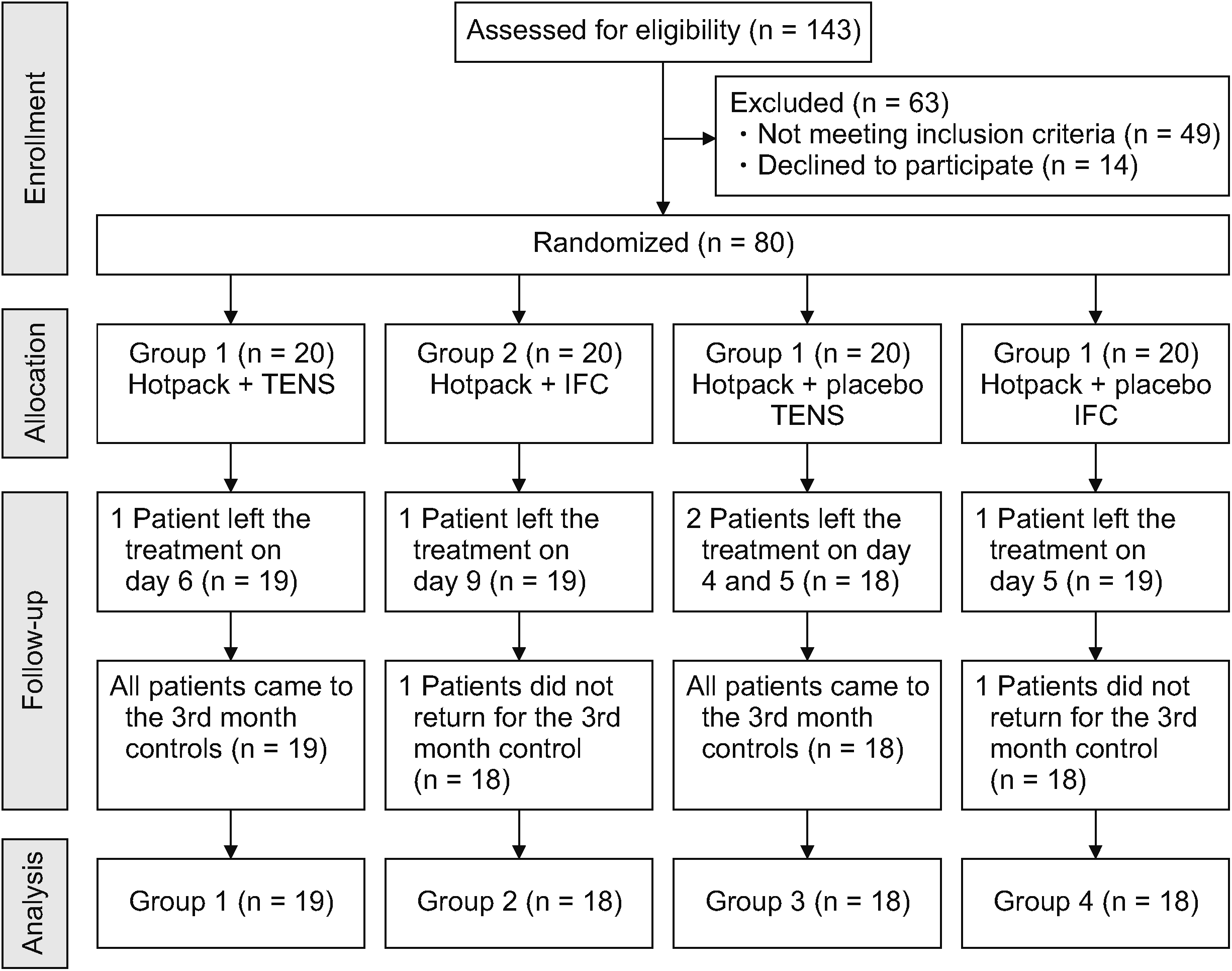
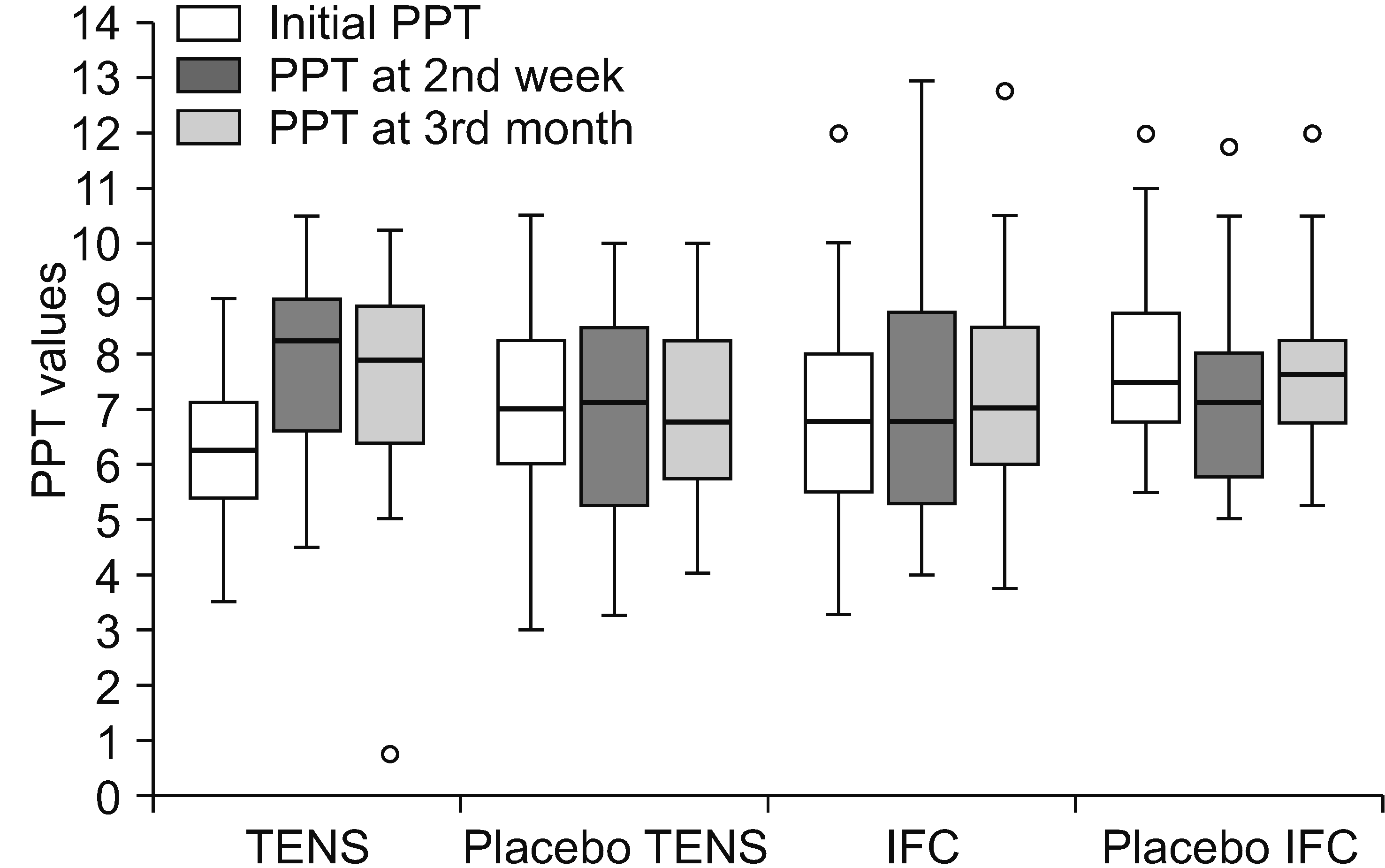
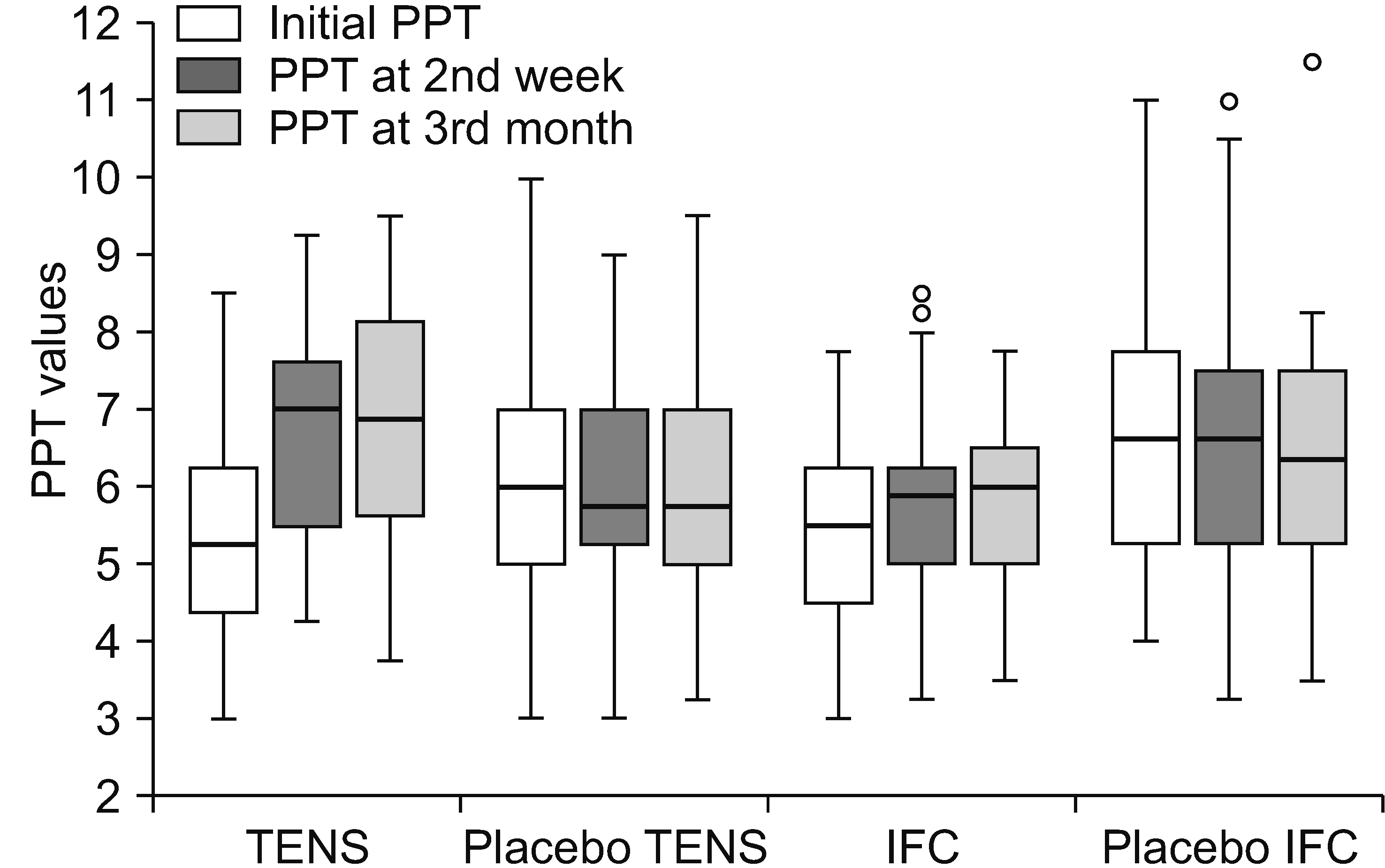
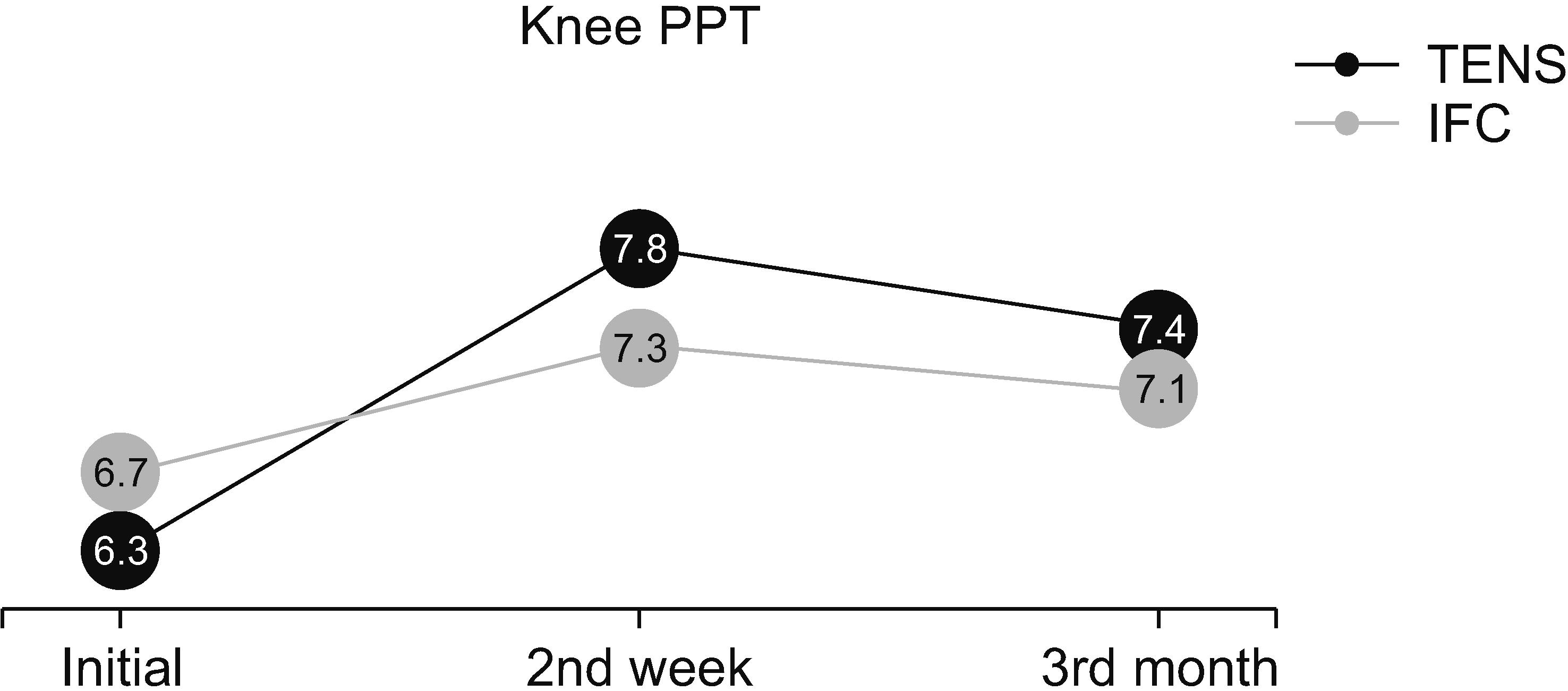
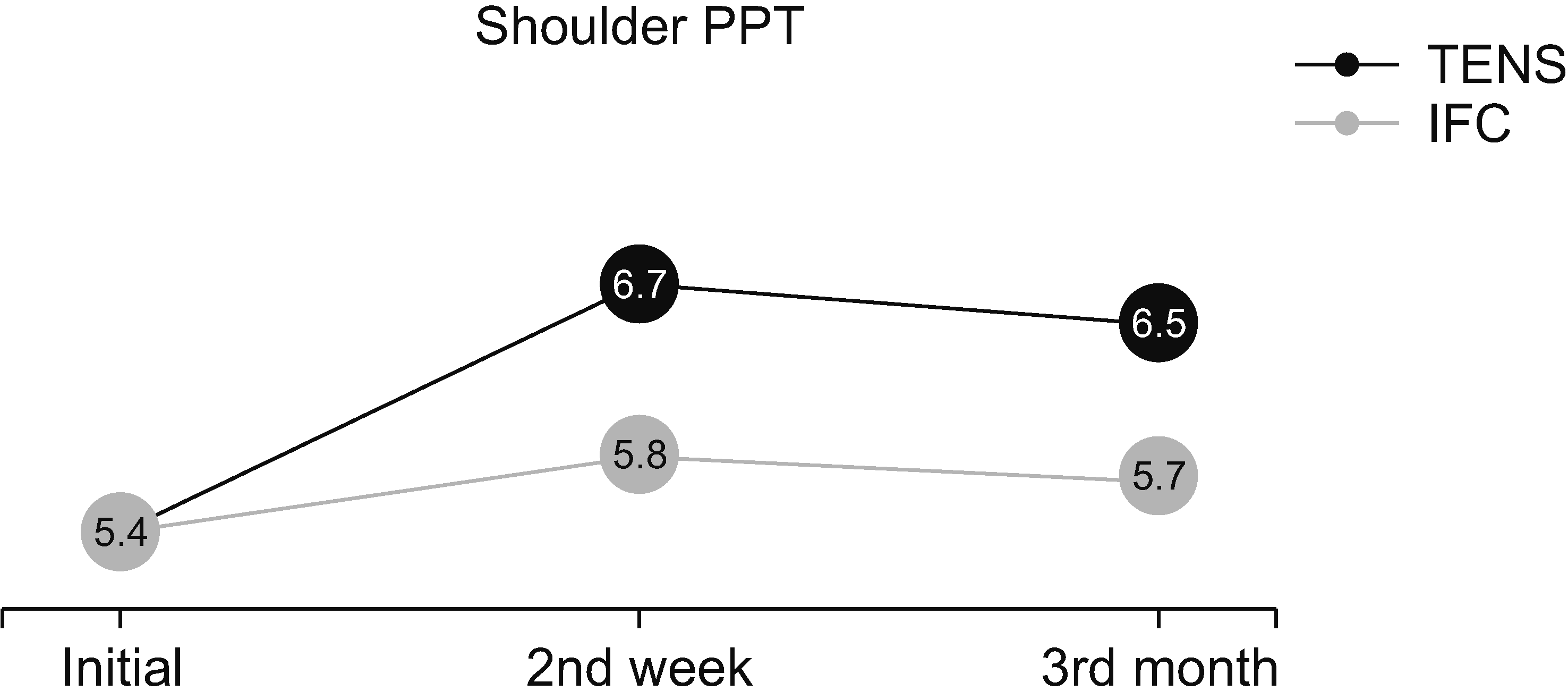




 PDF
PDF Citation
Citation Print
Print



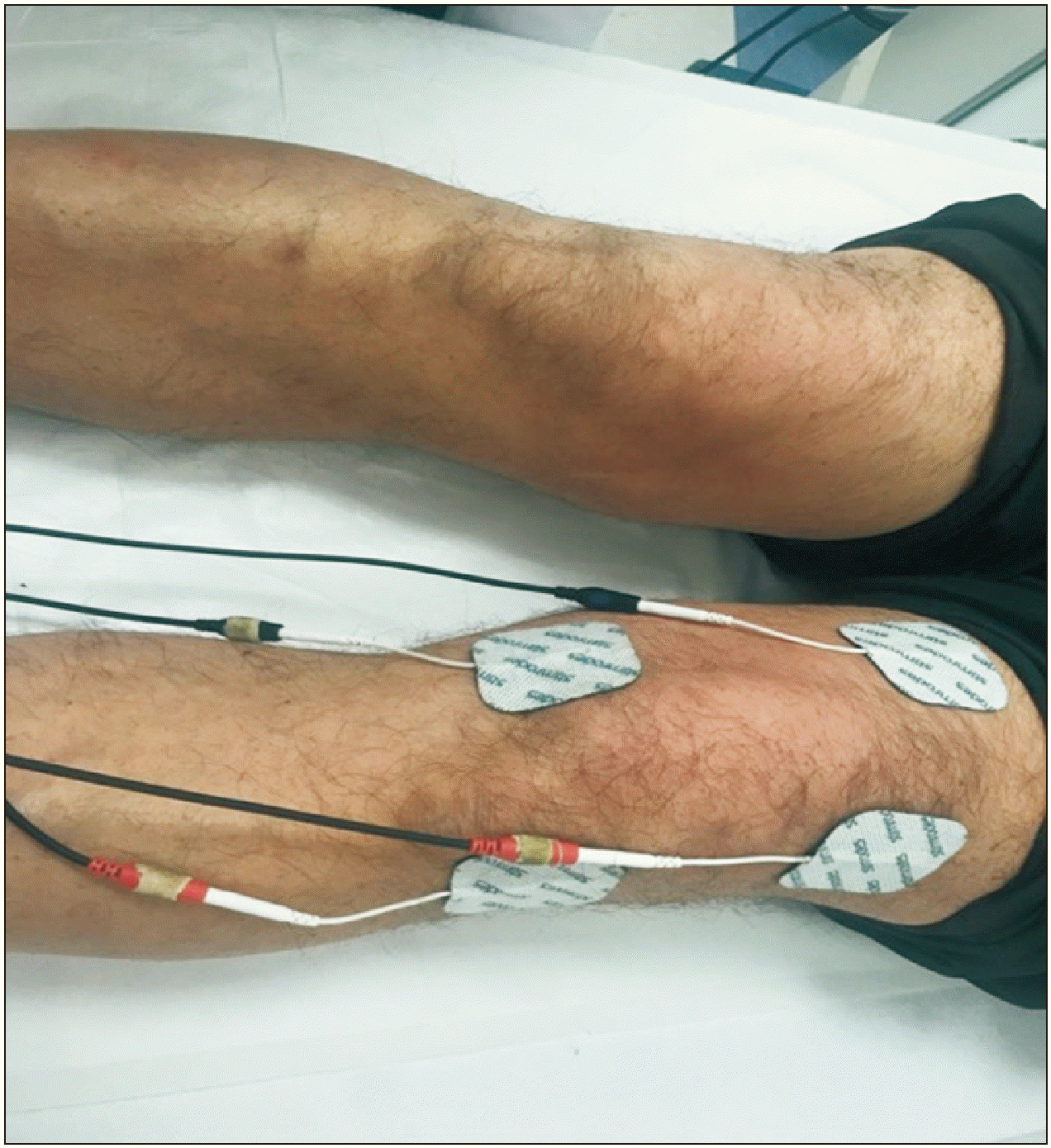
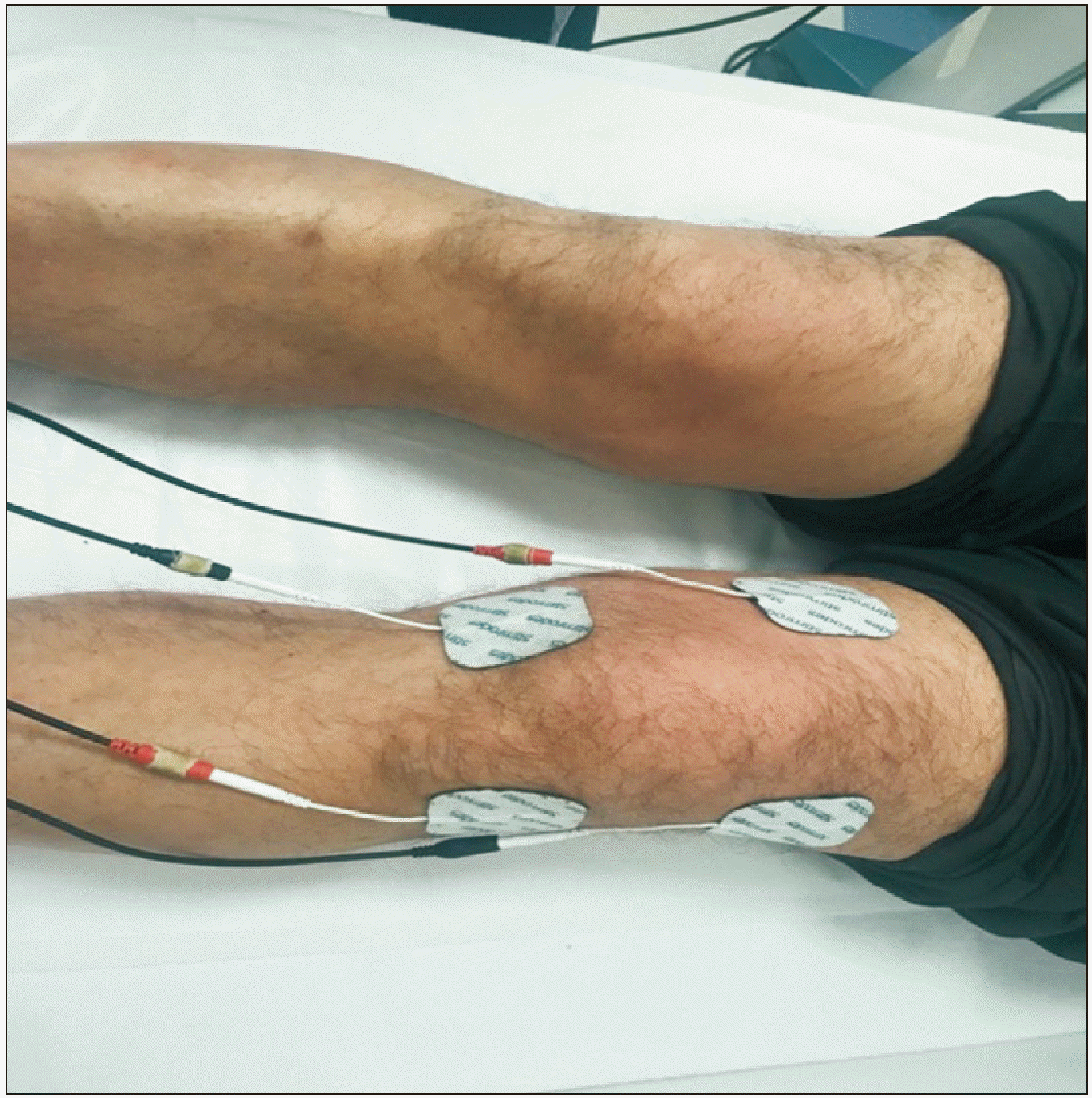
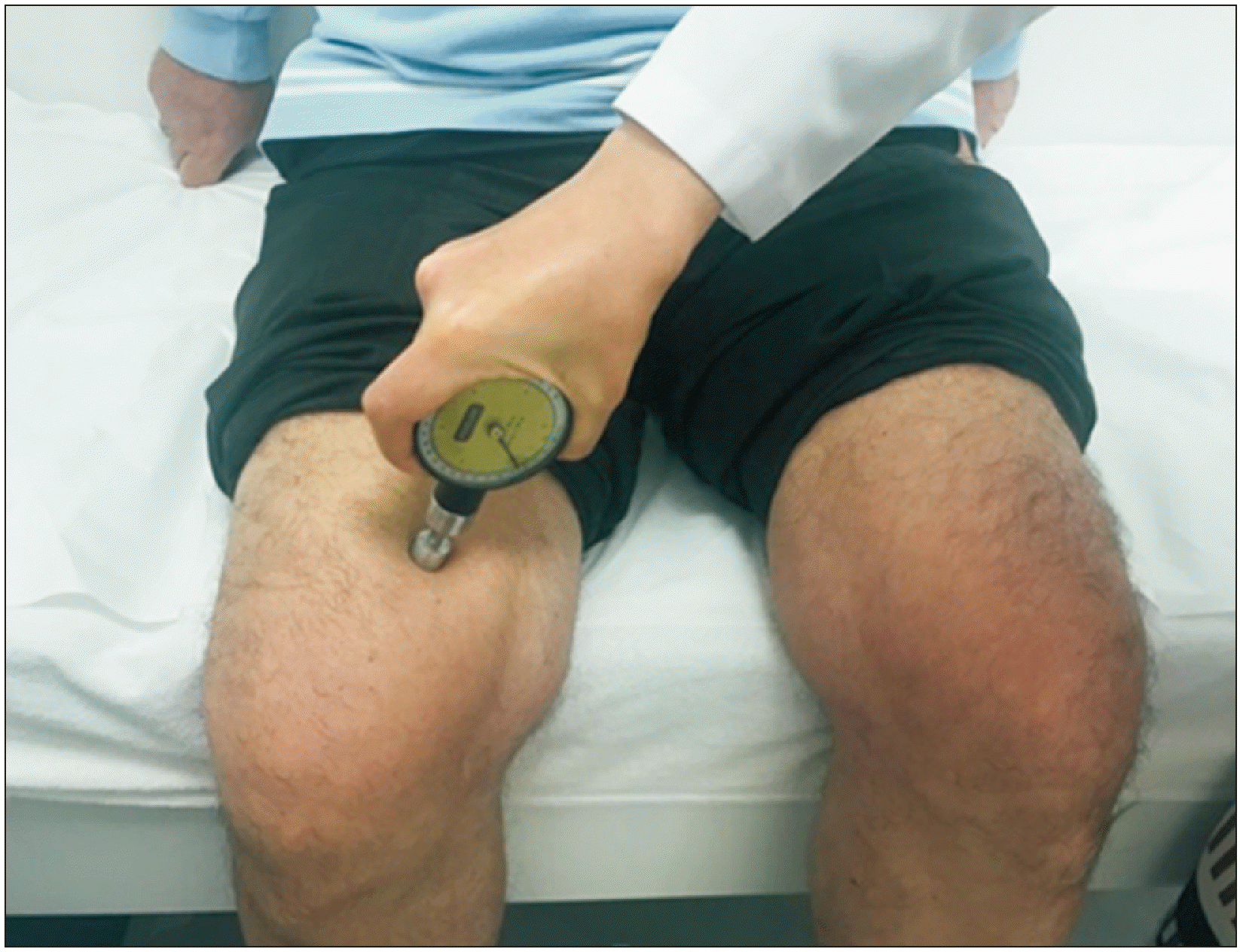
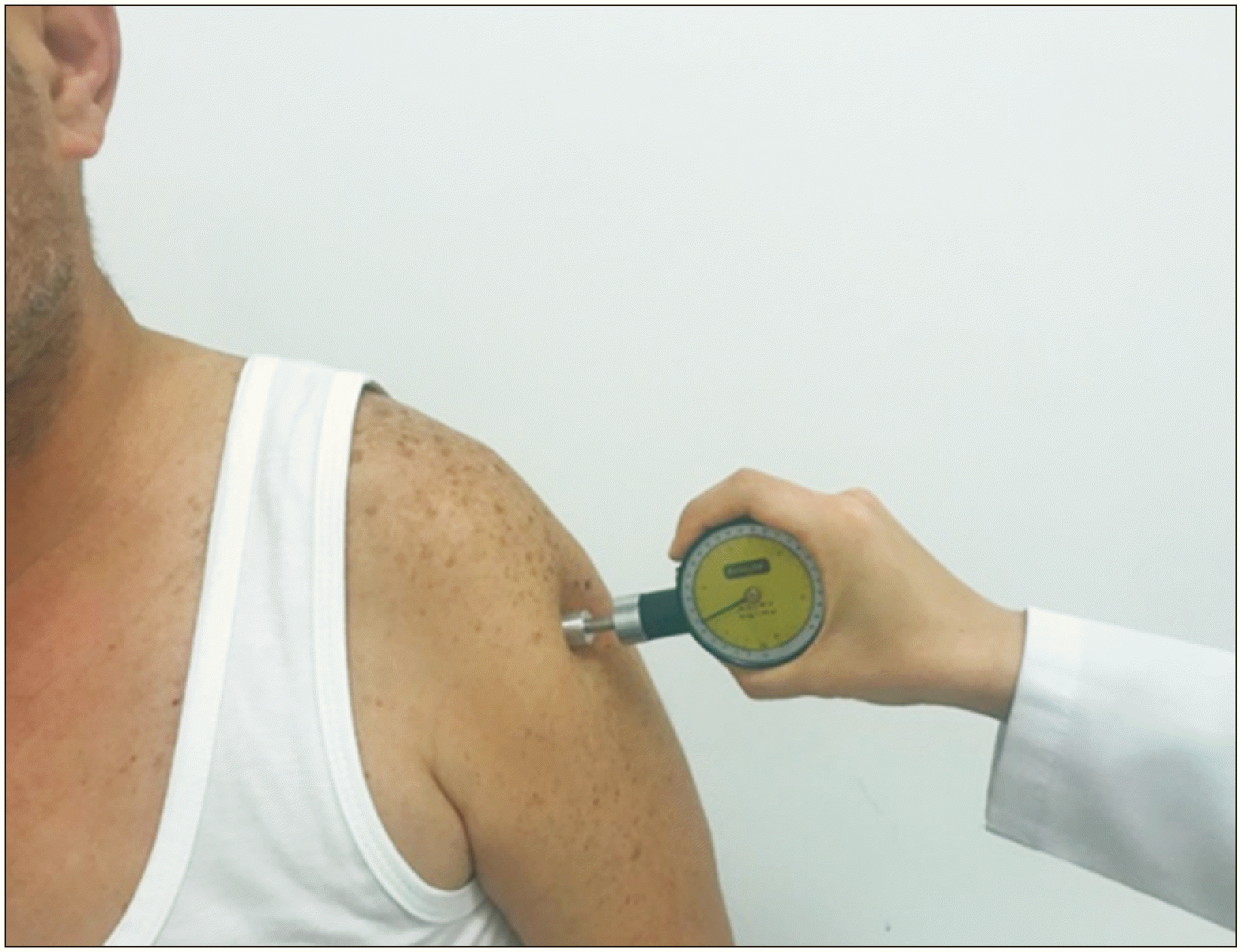
 XML Download
XML Download